
The Estate
The six-hectare Azienda Agricola Crissante Alessandria is located in Santa Maria’s Roggeri village which is in La Morra, a municipality in the region of Piedmont. Currently managed by Alberto Alessandria, the third generation of winemakers in his family, the estate only produces red wines: Barolo, Dolcetto d’Alba, Barbera d’Alba, and Langhe Nebbiolo – as well as a Nebbiolo rosé.
The company was officially founded in 1958 by Alberto’s grandfather, Crissante Alessandria, however the Alessandria family has been growing grapes and making wine in La Morra for at least eight generations (which is as far back as the family records go). Crissante and his wife Teresa decided to start making their own wine from the grapes in their family-owned vineyards which until then were mainly sold to the most important historical wineries in Langa. Crissante produced his first Barolo by blending the Nebbiolo grapes from his vines in the Roggeri and Capalot “crus”. Over the years, the company grew by acquiring new vineyards in La Morra. The separate vinification of the Capalot and Roggeri crus began in the 1980s, followed by the Galina cru in 2007. Crissante gradually renewed the wood in the cellar to obtain an appropriate balance between barriques, tonneaux barrels, and classic medium-size casks.
The winery has two separate areas: the vinification and packaging area, and the old underground aging cellar. The vinification is mostly traditional with long fermentations, pump overs, and manual punch-downs, aging in an appropriate balance of small, medium, and large oak containers.
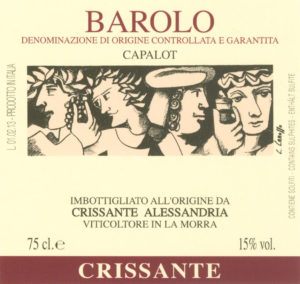
Barolo Capalot
Grape Variety: 100% Nebbiolo
Location: “Capalot” area (south of La Morra)
Soil: Limestone and fine sand
Production Area: About 0.5 ha
Altitude: 300-330 meters above sea level
Exposure: South/east
First Planting: 1951
Total Production: About 4,000 bottles
Vinification: About 2 weeks of maceration in stainless-steel, temperature-controlled tanks (28 degrees); “Follatura manuale” and remontage process 4 times per day for the first 5 days until the end of the pressing process.
Aging: Matured in large, Slovenian oak barrels for 24 months. Bottling between August of the third year after the harvest. Fining in bottle.
Tasting Notes: Intense garnet red. Fascinating aromas of red fruits, blackberries, and plums. Elegant notes of vanilla and mint follow through to a full body, with fine tannins an excellent finish. Fruity aftertaste with hints of vanilla and leather.
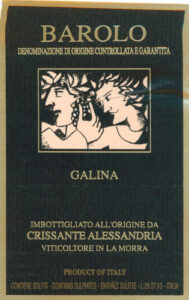
Barolo Galina
Grape Varieties: 100% Nebbiolo
Location: “Galina“ area (south of La Morra Hill)
Soil: Limestone soil with fine sand
Surface Area: About 0.8 ha
Altitude: 280-300 m. slm
Exposure: South
First Planting: 2014
Total Production: About 5500 bottles
Vinification: About 2 weeks of maceration in stainless tanks at 28 degree temperature control; “Follatura manuale” and remontage process 4 times per day for the first 5 days until the end of pressing process.
Aging: In French oak barrels (barriques and tonneaux) of 2.25 and 7q for 24 months. Bottling between August of the third year after the harvest. Then fining in bottle.
Tasting Notes: Intense garnet red. Powerful yet elegant nose with hints of ripe fruits, apricot, and blackberries. Delicate vanilla nuances and licorice. Full-bodied, warm, and well-balanced with soft tannins.
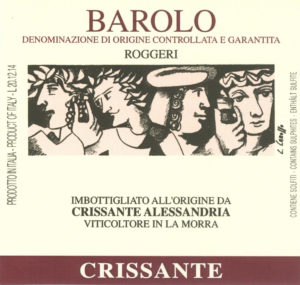
Barolo Roggeri
Grape Varieties: 100% Nebbiolo
Location: “Roggeri” area (south of La Morra Hill)
Soil: Clay with limestone soil
Production Area: About 2.2 ha
Altitude: 280-300 meters above sea level
Exposure: South-south/east
First Planting: 1957
Annual Production: About 15,000 bottles
Vinification: About 2 weeks of maceration in stainless tank at 28 degree temperature control. “Follatura manuale” and remontage process 4 times per day for the first 5 days until the end of pressing process.
Aging: Fining in big Slavonian oak barrels for 24 months. Bottling between August of the third year after the harvest, followed by fining in bottle.
Tasting Notes: Intense garnet color. Wonderful nose of mature fruits like plum, apricot, and blackcurrant. Light aroma of purple flowers. Final hints of spice and truffle. Full-bodied with velvety tannins. Long finish.
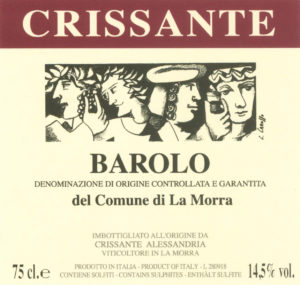
Barolo del Comune di La Morra
Overview: This wine is a blend of 3 crus. 60% from the Ruggieri vineyard (clay and limestone), 20% San Biagio vineyard (light clay and sand), 20% Bettolotti vineyard (near Verduno, light clay and sand).
Production Area: About 2.9 hectares
Altitude: 220-280 meters above sea level
Exposure: ROGGERI – southeast; SAN BIAGIO – south; BETTOLOTTI – east
Average Age of the Vines: 7 – 66 years old
Grape Variety: 100% Nebbiolo
Average Production: 16,000 bottles
Harvest: Manually done the first week of October
Vinification: About 2 weeks of maceration in stainless tanks at a controlled temperature of 26-28°C; punching down and remontage process 4 times per day from the fifth day until the end of fermentation process. Malolactic fermentation takes place immediately after alcoholic fermentation in steel containers at a temperature of 20°C.
Aging: 2 years in Slavonian wood barrels, 1 year in bottle. Normally bottling takes place in June or July of the third year. Refinement for another 9 months in bottle in the underground cellar.
Alcohol: 14.5%
Tasting Notes: Brilliant and vivid garnet color. On the nose, this wine is complex with great freshness. Hints of cherry and ripe strawberry with a background of dried apricot, accompanied by pleasing tarry notes on the finish. Full-bodied, elegant, and refined, with silky tannins that make the palate pleasantly clean.
Cellaring: Great potential for cellaring. Consumption is recommended within 10-15 years of bottling.
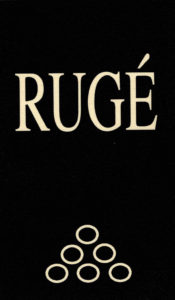
Barbera d'Alba Superiore Rugé
Grape Variety: 100% Barbera
Location: La Morra
Soil: Clay-limestone
Production Area: About 0.4 hectares
Altitude: 250-300 m. slm
Exposure: South/east
First Planting: 1954
Total Production: About 2,000 bottles
Vinification: About 2 weeks of maceration in stainless steel tank at 28 degree temperature control. “Follatura manuale” and remontage process 4 times per day for the first 5 days until the end of the pressing process.
Aging: In French oak barrels (tonneaux) of 7q for 12 months. Bottling usually June of the second year after the harvest. Fining in bottle.
Tasting Notes: Ruby red with garnet nuances. Delivers notes of blackcurrant, licorice, dried cherry, and light incense. Rich and harmonious, full-bodied, with a long aftertaste of ripe, red fruits, vanilla, and licorice. Ideal for cellaring.
Alcohol: 14.5%
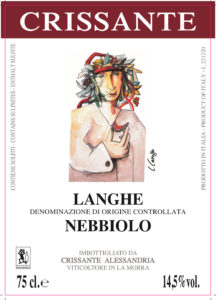
Langhe Nebbiolo
Production Area: La Morra
First Planting: 2009
Alcohol: 14.5% vol.
Soil: Clayey and calcareous soil with clear underlying marl.
Total Surface Area: 0.2 ha
Altitude: 250 meters above sea level
Exposure: East
Harvest: Done manually the first week of October.
Vinification: Fermentation for approximately 10 days in temperature-controlled steel tanks in contact with the skins, frequent pump-overs and punch-downs especially during the first 5 days of maceration. Malolactic fermentation takes place immediately after alcoholic fermentation in steel containers in a heated environment.
Aging: 12 months in 225 liter barrels used for the second time. The bottling normally takes place in June – July of the second year. Refinement for another 6 months in bottle in the underground cellar.
Total Production: Approx. 1200 bottles
Tasting Notes: Ruby red color with bright garnet reflections. The nose has a marked aroma of red fruit, raspberry, apricot, and cherry with floral hints reminiscent of violets. Warm and delicately dry on the palate with great balance. Presence of pleasant tannins, with good body and aftertaste of cherries.
Food Pairings: Goes well with starters, first courses, and meat-based second courses. It is also excellent with fresh and medium aged cheeses.
Cellaring: The wine is designed for immediate consumption but can evolve for at least 7-8 years. Store it in a horizontal position and at a temperature not greater than 18°C.
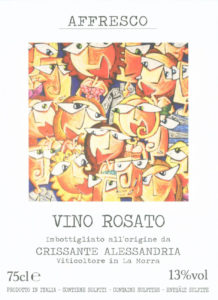
Vino Rosato Affresco
Soil: Marly-calcareous
Altitude: 250-300 meters above sea level
Grape Varieties: 100% Nebbiolo
Vines: Planted in the La Morra plot; exposed to the east, southeast
Production: About 1500 bottles
Vinification: Racking a few hours after pressing and after brief contact with the skins, where a small amount of color is extracted. Long fermentation lasting 3-4 weeks in temperature controlled stainless steel tanks at low temperature in contact with the skins. The wine remains in the stainless-steel tanks for the winter months with exposure to the natural cold. Typically bottled in the spring.
Tasting Notes: Pale pink color tending toward onion skin. On the nose, there are marked aroma of fresh fruit such as raspberries and cherries, complemented by a light floral fragrance. The wine is soft and very harmonious on the palate. Fresh acidity and good taste consistency. Sapid.
Food Pairings: Excellent as an aperitif and with summery foods. It pairs wonderfully with seafood dishes.
Alcohol: 13.5%


